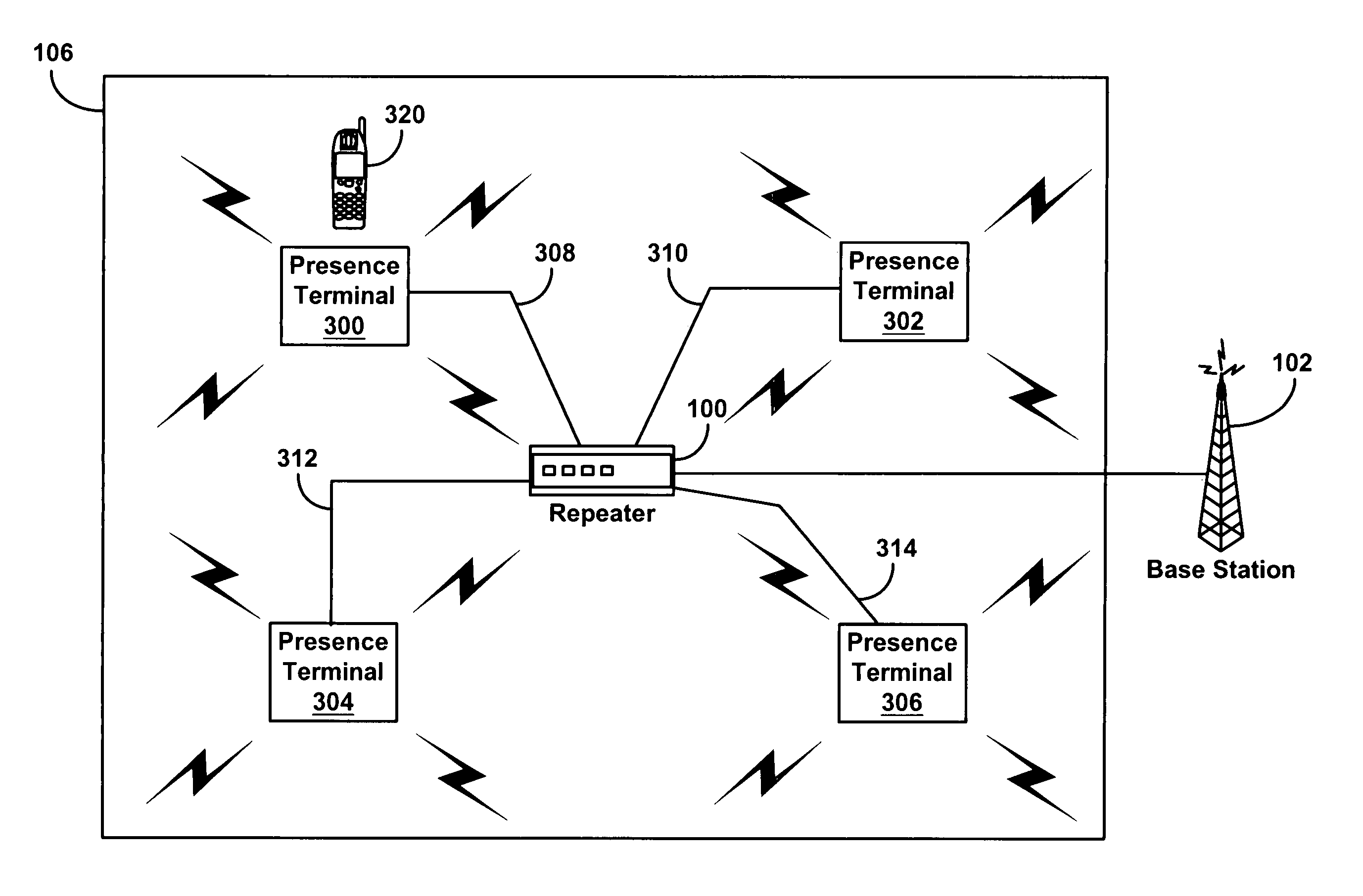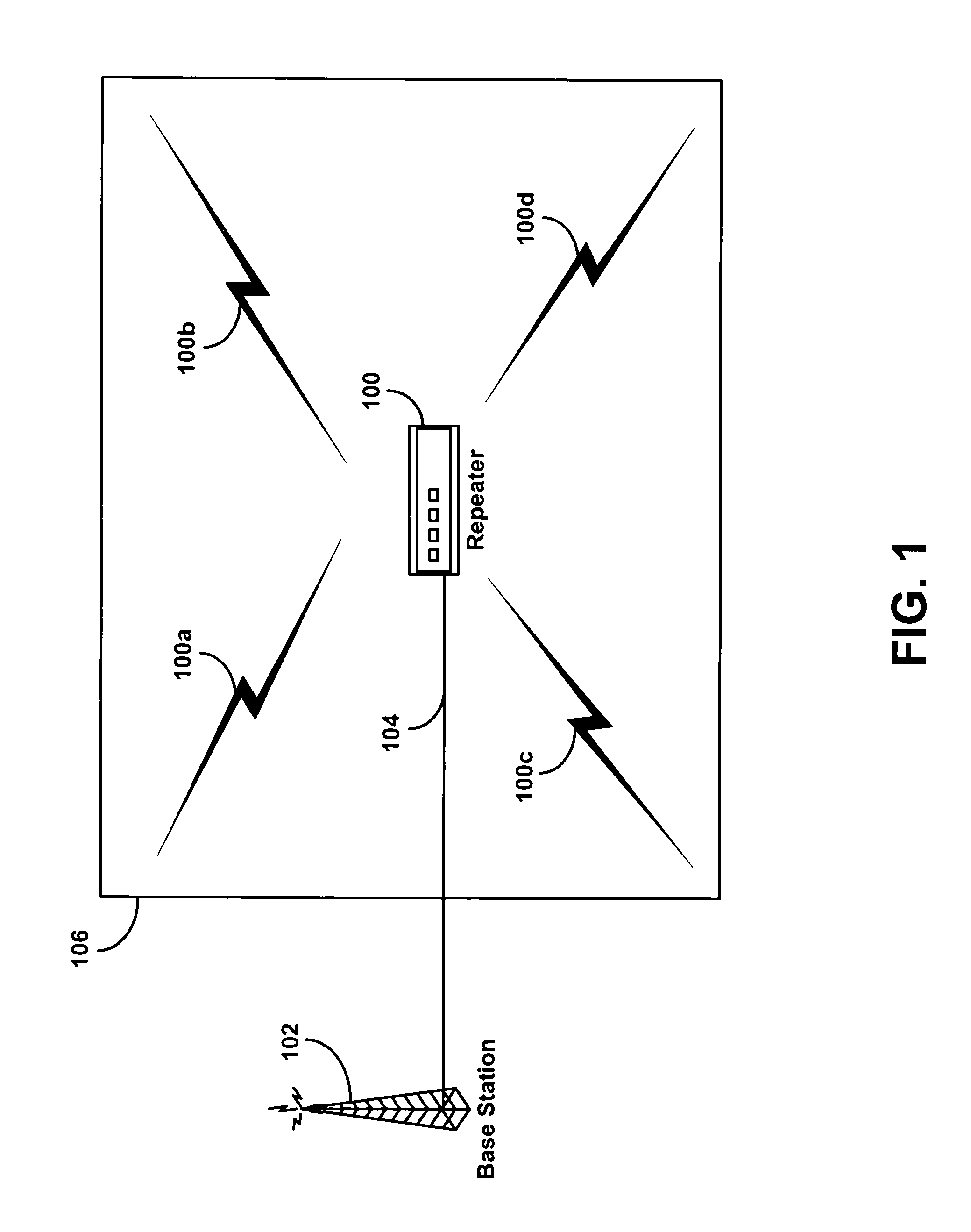Method and system for proximity detection for an in-building wireless repeater
a wireless repeater and proximity detection technology, applied in transmission monitoring, frequency-division multiplex, high-level techniques, etc., can solve problems such as attenuation or otherwise degrading signals passing over the air interface, cellular wireless communications can suffer from varying levels of signal degradation, and problems that can be even more acute, so as to achieve the effect of higher power
- Summary
- Abstract
- Description
- Claims
- Application Information
AI Technical Summary
Benefits of technology
Problems solved by technology
Method used
Image
Examples
Embodiment Construction
[0026]FIG. 1 is block diagram of an exemplary wireless network configuration that uses a repeater having proximity detection in order to switch the repeater between active and standby modes. A repeater 100 may connect to a base station 102 for a wireless network via wired data link 104. The base station 102 is merely exemplary in nature, however, and it is not necessary that the repeater connects to a base station 102. The particular network element that connects to the repeater might vary depending on the type and configuration of the wireless network. Also, the repeater 100 might communicate with the base station 102 or other network element through a wireless data link instead of the wired data link 104.
[0027]The repeater 100 generally functions to repeat signals sent to and from wireless devices on the wireless network. For example, the repeater 100 can receive signals that are transmitted from wireless devices. The repeater 100 can then send the signals through the wired data l...
PUM
 Login to View More
Login to View More Abstract
Description
Claims
Application Information
 Login to View More
Login to View More - R&D
- Intellectual Property
- Life Sciences
- Materials
- Tech Scout
- Unparalleled Data Quality
- Higher Quality Content
- 60% Fewer Hallucinations
Browse by: Latest US Patents, China's latest patents, Technical Efficacy Thesaurus, Application Domain, Technology Topic, Popular Technical Reports.
© 2025 PatSnap. All rights reserved.Legal|Privacy policy|Modern Slavery Act Transparency Statement|Sitemap|About US| Contact US: help@patsnap.com



